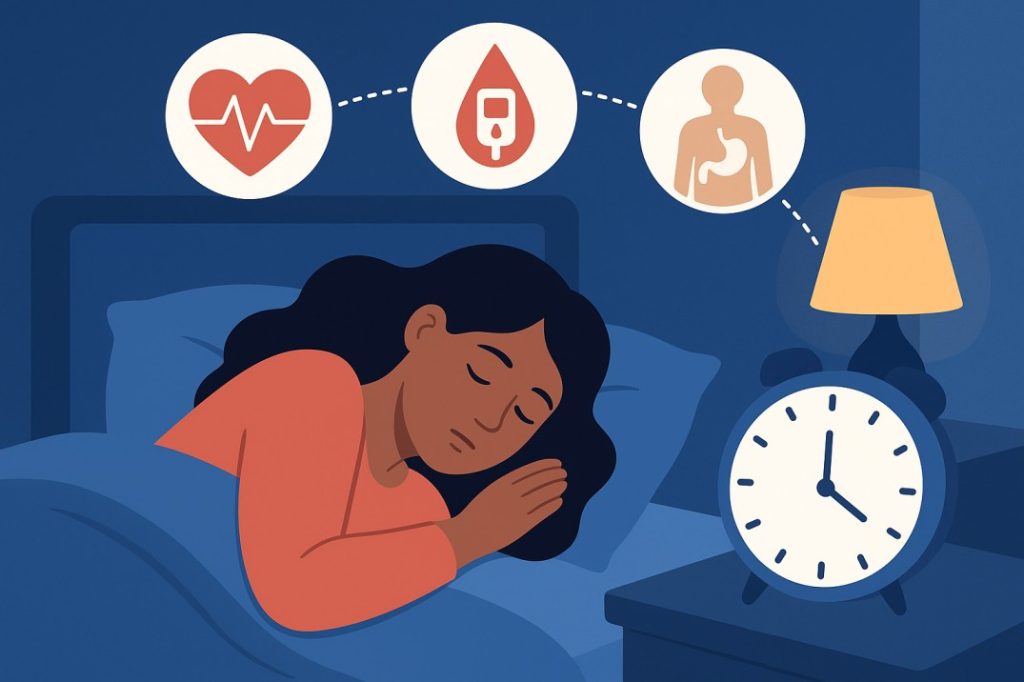- By Adjoa Kyerematen
Endometriosis, a condition affecting an estimated 10% of women of reproductive age, remains shrouded in mystery and often undiagnosed. This chronic illness, where tissue similar to the lining inside the uterus grows outside it, leads to severe pain, infertility, and a myriad of other debilitating symptoms. The crisis becomes even more alarming when considering its disproportionate impact on women of color, who face significant barriers in awareness, diagnosis, and treatment.
For many women, the journey to an endometriosis diagnosis is fraught with misdiagnoses and a lack of understanding from healthcare providers. It is a lengthy and frustrating journey. On average, it takes seven to ten years from the onset of symptoms for a woman to receive a correct diagnosis. However, this journey can be even longer and more complicated for women of color.
Research reveals that Black and Hispanic women are less likely to be diagnosed with endometriosis compared to their white counterparts, and when they are diagnosed, it’s often at a more advanced stage of the disease. The disparities in diagnosis is closely correlated with the idea that endometriosis is a “white women’s disease”, the implicit bias among providers regarding how Black women experience pain, and glaring lack of awareness about endometriosis, not only among the general public but also within the medical community.
“The management of pain is one of the largest disparities that we see between Black people and White people in the American health-care system,” said Tina Sacks, an associate professor at the University of California at Berkeley and author of “Invisible Visits: Black Middle-Class Women in the American Healthcare System.” in a recent Washington Post article.
In addition, women of color often face limited access to healthcare, lack of insurance, and the inability to take time off work for multiple medical appointments that is often required to achieve a correct diagnosis. These factors contribute to the delay in diagnosis and the ongoing struggle to manage the disease. Policies aimed at expanding insurance coverage, increasing funding for community health centers, and providing transportation assistance for medical appointments could help address this problem.
Monique Jackson, a 34-year-old woman living with endometriosis, shares her experience: “It took nearly a decade for doctors to take my pain seriously. By the time I was diagnosed, the disease had progressed significantly. It affected my job, my relationships, and my mental health.”
However, raising awareness and education in the general public is needed to increase concern of this disease that currently receives so little attention. There is general concern among women’s health advocates that cultural beliefs and stigmas around menstrual health and gynecological issues can prevent women from seeking care. In some communities, discussing menstrual pain is taboo, leading to a lack of support and understanding from family and community members.
References
- Agarwal, S. K., et al. (2019). “Endometriosis in Adolescents and Young Adults: Prevalence and Impact.” Journal of Adolescent Health.
- Bougie, O., et al. (2019). “Racial Disparities in Endometriosis: The Intersection of Race, Gender, and Health.” American Journal of Obstetrics & Gynecology.
- Flores, I., et al. (2018). “Understanding Endometriosis in Minority Women: The Role of Healthcare Disparities.” Obstetrics and Gynecology Clinics of North America.
- Hoffman, K. M., et al. (2016). “Racial Bias in Pain Assessment and Treatment Recommendations.” Proceedings of the National Academy of Sciences.
- Cardoso, J. V., et al. (2020). “Educational Interventions to Reduce Racial Disparities in Endometriosis Care.” Health Education Research.
- Betancourt, J. R., et al. (2017). “Addressing Disparities in Health and Healthcare: Issues and Solutions.” Health Affairs.
- Collins, F. S., et al. (2019). “Cultural Competence in Healthcare: A Critical Component for Reducing Disparities.” Journal of Women’s Health.
- Sacks, D. A., et al. (2020). “The Psychological Impact of Chronic Pain in Women with Endometriosis.” Pain Management Nursing.
Trending Topics
Features
- Drive Toolkit
Download and distribute powerful vaccination QI resources for your community.
- Health Champions
Sign up now to support health equity and sustainable health outcomes in your community.
- Cancer Early Detection
MCED tests use a simple blood draw to screen for many kinds of cancer at once.
- PR
FYHN is a bridge connecting health information providers to BIPOC communities in a trusted environment.
- Medicare
Discover an honest look at our Medicare system.
- Alliance for Representative Clinical Trials
ARC was launched to create a network of community clinicians to diversify and bring clinical trials to communities of color and other communities that have been underrepresented.
- Reducing Patient Risk
The single most important purpose of our healthcare system is to reduce patient risk for an acute event.
- Jessica Wilson
- Subash Kafle
- Subash Kafle



















